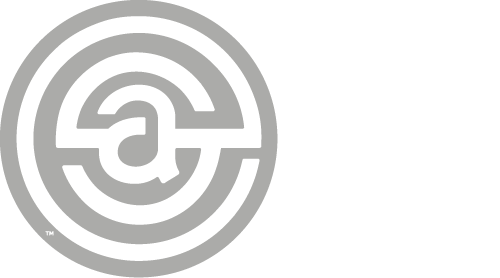Getting off the ground and flying high with your foodservice broker.
In our series so far, we’ve talked about finding and attracting a foodservice broker, and then about getting the very most out of your relationship with your broker. We’ve covered the importance of completely and competently articulating your plan. We also looked at how much the other brands in a broker’s portfolio will matter to your brand’s success. And, finally, we’ve considered some of the nuts and bolts of hiring a foodservice broker, including costs and benefits. All of these, of course, are about building a strong and sustainable, mutually beneficial partnership. We finish this series of essays with some thoughts about the costs of getting your brand off the ground with your broker, and about reaching the right destination together, as partners.
What is cost to serve?
Reducing the broker’s cost to serve your business can help assure that your product gets maximum exposure and presentation by sellers – which translates into more sales for your product, and more success and profits for everyone. We’ve talked about the importance of knowing and understanding a broker’s portfolio, and cost to serve also relates to the ways a broker operates. Making a broker go out of her wheelhouse, in other words, and do something completely different for you than what she does for other brands, will dilute efficiencies and deliver less action for the money, which all equals lower performance.
So much of the way hiring a broker works relies on the relationships the sellers have with customers in the market. The leadership in that brokerage firm has relationships with the top customers and the top distributors in the market. The lines they have with operators and distributors, those synergies, allow brokers to work effectively and get results.
Understand, then, if you can get in the flight path, you can get on their 747. But if you ask them to build a whole new runway for you, it’s easy to wind up on a crop duster. The more you go outside of the core competencies they spend the majority of their time doing, the less cost-effective it’s going to be for them – the higher the cost to serve you – and if it’s less cost effective for them, that’s going to get passed on to you.
Are you, in other words, cost neutral to your broker? Cost positive or negative? Who else can you share the flight with, so to speak, so the synergies — between your brand, the other brands in your broker’s portfolio, your broker herself and the operators and distributors she calls on – maximize the results and profits for everyone?
Consider the big picture and the smaller one.
You and your broker share a goal – helping her sellers close as many sales as possible – and it can be easy to focus on the big picture, especially if you’re thinking of your relationship as one where you’ve turned sales over to your broker. Consider, though, the smaller picture, and the costs of a single sales call. For the broker, each call includes the costs of the laptop the seller works on and the freezer bag in her car; the freezer, storage, and foodservice kitchen at her office; the cost of her salary and benefits package; and all of the other associated and fluctuating expenses, like gas. Each of those costs is multiplied by a large sales force making hundreds of calls a day. Every call must count.
How do you make sure your product gets presented? Have that good fit with the rest of the broker’s portfolio, make sure your broker is well equipped with samples and marketing materials so that she’s supported in presenting your product. Be easy to sell, and prepare your broker and her sellers well, with samples and sales materials that help operators see your product as on-trend and as something people look forward to trying. This reduces your cost to serve and makes your product more likely to be the one Julie pulls out of her car, presents to operators and distributors, and sells.
If your product needs special care, or attention in a different segment, or if you want something different from the way your broker’s 747 normally flies, let her know that up front, when you’re working out your contract and agreement. If 75% of what you’re asking your broker to do is in her glide path, great, but you need to get creative about how you’re going to offer to compensate her for the other 25% that’s outside their usual glide path. She may be willing to provide extra or special services for your product but approach it with the willingness to pay at a higher rate to make it a win/win for both parties. You’ll find your broker a lot more willing to invest along with you and own the results, rather than expecting to fly first class and pay coach rates.
Remember if you go into the relationship thinking, “What’s the least I can possibly pay,” you’re likely to end up with a broker who’s thinking, “What’s the least I can possibly do?” You’re likely to get what you pay for, and pinching pennies can leave you with only pennies to pinch.
Clear agreements make for a smooth flight plan.
As you’re working out your contract, talk openly and explicitly about what you want and about what your metrics for success will be. Agree on a win -win situation mutually beneficial goals and on ways you can each measure your individual success and that you might be able to measure your shared success. Take into account whether the broker will handle your trade spend, deductions, bill-backs or other back-end services. Having the broker manage those things frees up other resources for you, and they’re part of the broker’s cost to serve you. Make sure you arrange compensation and take these services into account as you’re determining your indicators of success, as well.
Remember managing your samples – receiving them from the truck, managing and maintaining sample inventory – managing your trade spend, managing the tools that make your product easier to sell – those are synergies and skills that your make up your broker’s stock in trade. Her ability to get the most return on those things for you, to use them efficiently, is the reason you hire her instead of trying to do those things yourself. They’re the things she needs to be able to sell the maximum amount of your product – and if yours is the product that sells most easily, it’s going to be the product her sellers reach for to hit their sales goals. If something sells four out of every ten times it’s presented, you can bet it gets presented.
Again, a well-articulated agreement, with clear metrics of success, aligned with a well-prepared sales force, helps to reduce the cost your broker incurs in serving you, allows her to split costs between you and other clients, and helps to ensure your brand gets presented and sold.
All operators (and customers) are not created equally.
Keep in mind, also, hiring a broker allows you to market your product across segments. As we found out during COVID, a segment like K-12 might keep you in the air one day and crash the next. A broker can help make sure your product sells to multiple, diverse segments, so in even in such an extraordinary situation, you can stay aloft. She can help you pivot to focus more on one segment or another, even in unpredictable circumstances.
A broker may also be able to present your product to exactly the operators your product most needs to reach. Such specialized segments sometimes require specialized knowledge, expertise or a particular set of connections and relationships. If colleges and universities are the wind beneath your brand’s wings, for instance, sellers will likely speak to a Foodservice Director or a Food and Beverage Director – someone who’s very knowledgeable about a particular demographic of 18- to 24-year-olds. If you have a product or brand that particularly suits that very-discerning age-group, you’re going to want to hire a broker who has a great C&U team. You may pay more for their specialized knowledge and set of relationships, but if they’re able to introduce your product to more of those specialized operators, who are going to sell more of your product to that market that loves it, then you’re likely to get your money’s worth out of it and then some. You may be paying a little more but getting a lot more back than you would from a broker who did not have that specialized team – and this is what glidepath is all about.
Have a pleasant flight.
Whether we’re facing a pandemic, supply chain disruptions, a recession or the normal vagaries of doing business, remember cutting commissions or releasing your broker can be the equivalent ditching your plane without a parachute. Once you’ve found the right broker and created the right agreement and relationships, don’t step out of the plane, mid-flight. Instead, communicate with your broker as if she’s a partner and don’t be afraid to get creative about ways you can get through a crisis together. Keep in mind her cost of serving you and leverage her abilities to reach the segments that will broaden and diversify your market. That way, in good times and bad, you’ll have a safe flight and successfully reach your destination together.

Our guest blogger for this five-part series is Julie Swift. Julie provides us with a unique perspective, as a person who’s spent thirty years in foodservice, with time on each side of the client-broker relationship.
Julie spent 25 years in sales and marketing for the French’s Food Company and McCormick, and then just over 4 years as a broker in senior & executive leadership roles across sales, marketing, digital & business development. She has interviewed over 100 potential manufacturers – she knows what she’s talking about! Visit her or find her on LinkedIn


Recent Comments